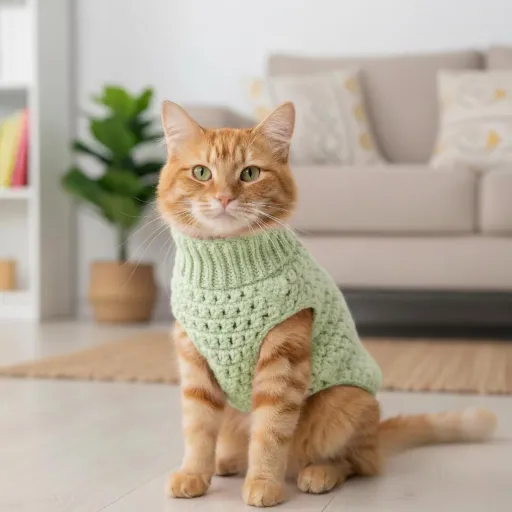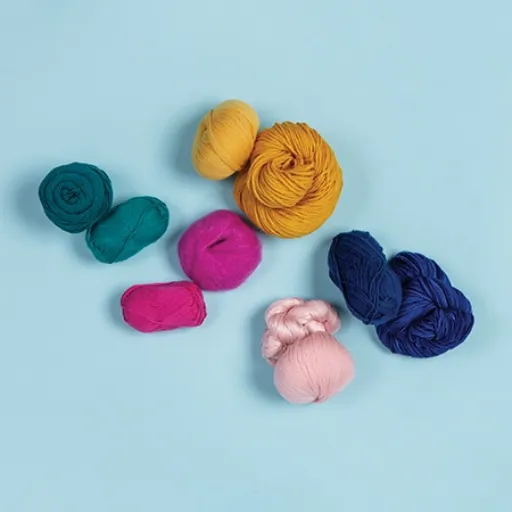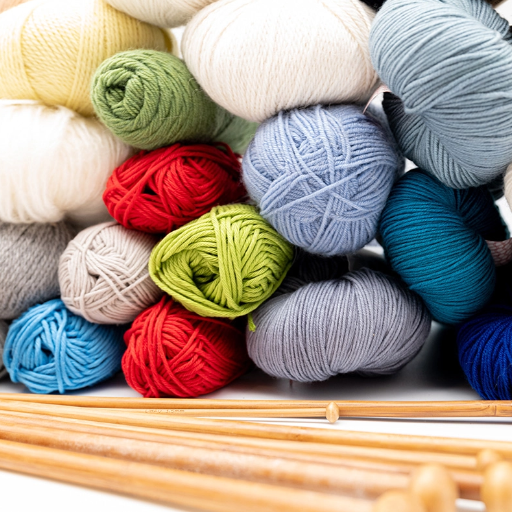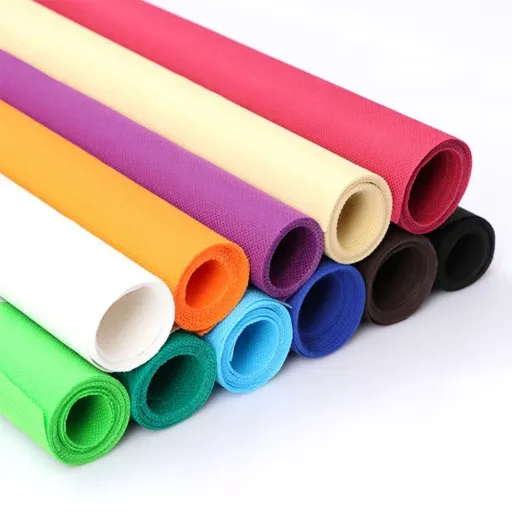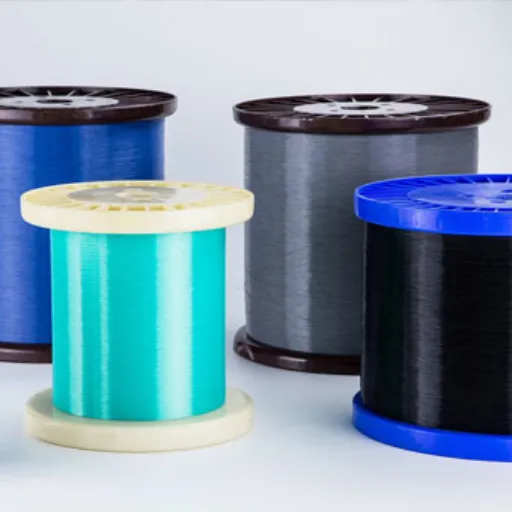Polypropylene fabric has garnered significant attention in the last decade, establishing itself as a versatile and indispensable material in various industries. The mixture of durability, lightweight structure, and cost-effectiveness has made polypropylene fabric one of the preferred materials for packaging, furniture, medical supplies, and activewear. But what is the magic behind this fabric? The article explores the properties that make it distinctive, discusses its applications in various areas, and sheds light on recent developments in the field that promise a very bright future. I consider the guide an arsenal worth having, whether you are a producer, a designer, or an environmentally conscious consumer, for learning why the polypropylene fabric is changing day-to-day products and specialized arts.
What is Polypropylene Fabric?
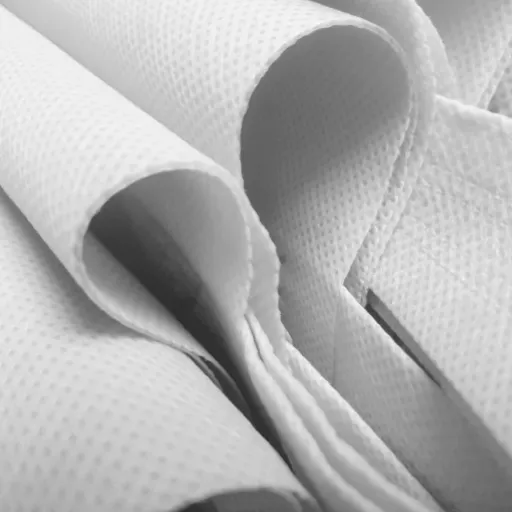
A textile made of polypropylene is classified as synthetic. Being a polypropylene polymer implies that it is a plastic polymer. Polypropylene fabric is lightweight, strong, and water-resistant, making it suitable for a wide range of applications. Strong and flexible are traits attributed to the fabric, and therefore, it finds use in industries like packaging, healthcare, and activewear. It is also breathable and dries quickly, making it an ideal choice for performance and outdoor gear. From a practical standpoint, its chemical and stain resistance prove to be of great advantage.
History of Polypropylene in Textiles
In the 1950s, polypropylene gained fame in textiles shortly after it was synthesized as a thermoplastic polymer by Giulio Natta and Karl Ziegler, who would later be awarded the Nobel Prize in Chemistry for this work. The introduction of this polymer into the textile industry revolutionized the production of lightweight and durable materials. By the mid-1960s, fibers made of polypropylene, commonly referred to as olefin fibers, began to be used in upholstery, carpeting, and industrial fabrics due to their resilience and affordability. With further enhancements in polymer technologies, its properties have also been upgraded, which underlie its current usage in high-performance sports gear, medical textiles, and environmentally friendly nonwoven fabrics. Currently, polypropylene remains a key material in the textile industry due to its excellent versatility and potential for sustainability.
Role of Polypropylene in Modern Fabrics
Due to its lightweight and advantages of durability and water resistance, polypropylene is a significant component of present-day fabrics. It is used in everything from activewear to protective gear, as these materials’ moisture-wicking and stain-resistant properties make them highly functional and comfortable. According to studies, the demand for sustainable and recyclable materials has driven significant growth in the global polypropylene textile market. Since polypropylene is produced through environmentally friendly means, requiring very little energy and producing negligible waste, industries are seeing growing appeal as textile manufacturers seek cleaner substitutions. Its great degree of versatility ensures it will always remain the focal point of fabrication solutions in both industrial and consumer applications.
Properties and Benefits of Polypropylene Fabric
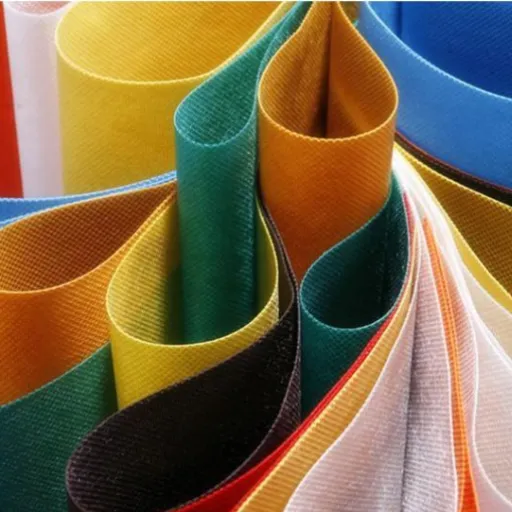
Key Properties
- Lightweight: The polypropylene cloth is ultra-lightweight, making it ideal for fine applications where free movement and portability are essential.
- Durable: The fabric offers high resistance to wear and tear, promoting longevity in various applications.
- Water-Resistant: This fabric resists moisture, not absorbing any water. Thus, it is ideal for waterproofing and outdoor applications.
- Stain-Resistant: Due to its non-absorbent nature, the polypropylene fabric naturally resists stains, maintaining its cleanliness, appearance, and appeal over time.
Additional Benefits
- Eco-Friendly Production: Fabricated with a minimal amount of waste and low energy consumption, it aligns with the principles of sustainability.
- Affordable: It is relatively cost-effective compared to alternative materials, offering a single economic choice for various fields.
- Resistant to Mold and Bacteria: The fabric is resistant to bacterial proliferation, enhancing its benefits in terms of hygiene and durability.
Distinctive Properties Overview
Polypropylene fabric is renowned for its distinctive set of properties, which make it highly versatile and valuable in numerous applications. One of its most notable characteristics is its lightweight nature, which enhances ease of use and comfort. Additionally, it is highly resistant to moisture, ensuring that it remains dry and does not absorb water easily. This hydrophobic property makes it ideal for outdoor and activewear. Polypropylene fabric is also exceptionally durable, featuring resistance to wear, tear, stains, and stretching, making it suitable for both industrial and consumer uses.
Furthermore, this fabric is resistant to chemical exposure, including acids and alkalis. Its low thermal conductivity ensures effective insulation, while its ability to retain color without fading adds to its aesthetic appeal. These attributes collectively establish polypropylene as a leading material in innovative textile applications.
Benefits of Using Polypropylene Fabric
Although they mention several benefits that make polypropylene fabric a preferred choice in many industries, it is a lightweight fabric, making it easy to handle and comfortable to wear or package. Additionally, since it repels moisture, it is an excellent ingredient for water-repellent products and can withstand highly humid conditions. Even when rarely considered, the fabric may withstand the most demanding environments, from mechanical evaluation to chemical attack, making it well-suited for medical apparatus or industrial equipment. Some of the newer types of polypropylene can be recycled, aligning with modern sustainability concepts and thereby contributing to the reduction of their environmental footprint. In conjunction, these properties make polypropylene a desirable choice for today’s textiles.
Applications Across Industries
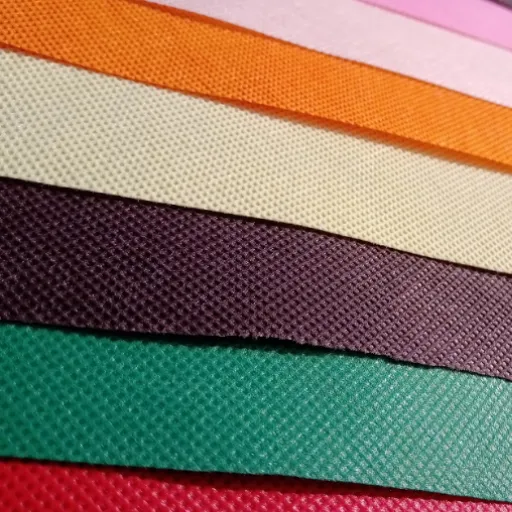
Due to the versatility and function of the polypropylene fabric, industries across a broad spectrum apply it for a variety of uses:
Healthcare
Used for masks, gowns, and disposable medical materials because of its lightweight and non-absorbent properties.
Agriculture
Used in mats for weed control and packaging materials; provides excellent durability and resistance to climatic factors.
Construction
Used as a geotextile and an insulation material, it conferred resistance to force and water.
Fashion and Textiles
For activewear, reusable bags, and upholstery, it is used for its breathability and ease of maintenance.
Industrial Use
Adapted for filtration, making ropes, and covers because of its high durability and corrosion resistance.
Nonwoven Fabrics: Hygiene Products and Landscape Fabric
With their pronounced versatility and efficiency, nonwoven goods are transforming various industries, particularly in the fields of hygiene and landscaping. These fabrics are commonly used in disposable items, such as diapers, sanitary napkins, and surgical masks, because they are soft, absorbent, and provide a barrier against foreign matter and fluids. In landscaping, nonwoven fabrics similar to those used in other applications allow for weed control, soil stabilization, and erosion control, ensuring durability and environmental sustainability. The other major factor contributing to the fabric’s acceptance is its lightweight nature, along with the ability to adjust properties such as permeability and strength to meet industry-specific requirements and environmental considerations.
Automotive and Medical Uses of Polypropylene
Polypropylene owes its considerable demand in the automotive and medical industries to its versatility, durability, and cost-effective nature. In the automotive sector, it finds broad-range applications, especially for interior and exterior components such as bumpers, dashboards, and door panels. Being lightweight, it also provides the automobile with better fuel efficiency. Additionally, its chemical and impact resistance make it suitable for harsh environment applications. However, with recycling permissible for polypropylene, the automotive industry considers sustainability in its approaches even more.
Instead, in the medical field, polypropylene plays a central role in the manufacture of syringes, medical vials, specimen containers, and surgical trays due to its biocompatibility and inertness. Its ability to endure sterilization treatment, such as autoclaving, is paramount in meeting the complete sterilization and hygiene standards required for medical applications. The result: an affordable, versatile, and sought-after material that fosters inventiveness and efficiency within these two industries.
Recent Innovations and Developments in Polypropylene Fabric
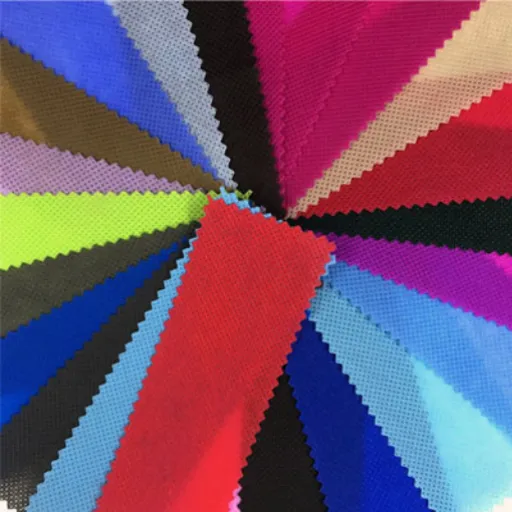
Modern advancements in the polypropylene fabric industry have created opportunities for applications that enhance sustainability and performance. Researchers have designed recyclable polypropylene textiles to reduce environmental impact while enhancing shelf life. Production methods, such as melt-blown technology, have upgraded filtration efficiency for use in medical masks and air systems. Further modifications, including those for UV resistance and breathability, have enabled broader applications in outdoor and activewear products. With these advances, polypropylene fabric remains a truly versatile and responsive material, adapting to the evolving needs of the industry.
Advancements in Sustainable Polypropylene
The significant new shifts in the era of sustainable polypropylene aim to transform the environmental impact into its opposite while providing utility and durability for various purposes. Such advances include the creation of bio-based polypropylene, which is made from renewable resources such as sugarcane or corn. This reduces the strain on nature for fossil fuels and lowers the overall environmental footprint of the material. The other side of the coin involves upgrading recycling facilities to recover and reuse polypropylene more effectively today. Closed-loop recycling interventions enable manufacturers to produce different products from post-consumer polypropylene waste without compromising the material’s quality in the process. In concert with dicha initiatives, industry-wide environmental efforts show an increasing inclination toward developing a greener path to poly production.
Case Studies in Military and Medical Applications
The versatility and durability of polypropylene render it a valued material for use in both military and medical applications. In the military, it is widely used in the manufacture of lighter-weight protective gear, such as helmets and body armor, against various threats. This provides proper protection while being light enough to reduce fatigue in soldiers. The polymer is furthermore employed in the manufacturing of field equipment, storage containers, and waterproof fabrics, all of which require the highest level of performance under extreme conditions.
In the medical field, polypropylene is crucial for manufacturing syringes, surgical trays, and medical textiles, including masks and gowns. The material’s ability to resist chemicals and withstand sterilization processes, such as exposure to high temperatures, is a necessity to maintain hygiene and safety. Studies have shown that innovations in polypropylene are becoming more and more effective in the furtherance of making life-saving medical equipment available, rendering this polymer indispensable in these critical industries.
Environmental Considerations of Polypropylene Fabric
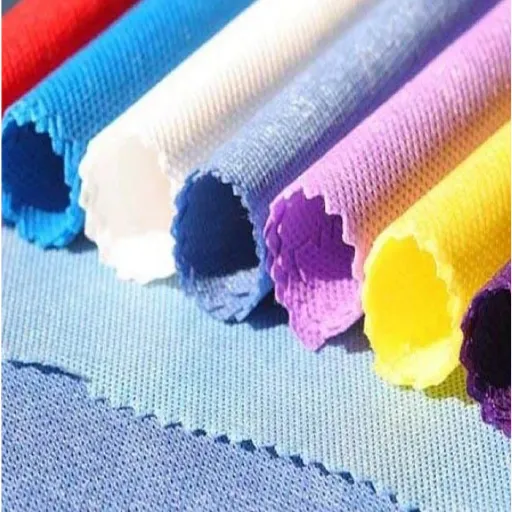
Environmentally speaking, polypropylene fabric serves both for and against. While some positives would include its lightness, durability, and recyclability, which, if properly managed, reduce waste, polypropylene is a class of synthetic polymer obtained from non-renewable petroleum sources, and its production is a greenhouse gas emitter. Furthermore, when improperly disposed of, these polypropylene products cause environmental pollution, as the material does not decompose easily. Resolving these issues will require improvements to the recycling system, as well as efforts to develop more environmentally friendly alternatives. Consumers and industries should thus be educated on proper disposal and recycling practices, which would help lessen the environmental impact.
Challenges in Sustainability and Environmental Impact
Sustainability and environmental impact always present one key challenge in addressing them: one has to weigh the easy and beneficial use of things like polypropylene against the eventual harm to the environment. Changing consumer behavior and industrial practices toward sustainability requires serious investment in education, innovation, and infrastructure. I believe this issue is to promote an aggregate consciousness of environmental responsibility, with practical needs in mind.
Recycling Initiatives for Polypropylene
Recycling initiatives in the polypropylene industry are gaining momentum due to rising environmental concerns. Being the newest, they consider closed-loop recycling systems wherein polypropylene products are collected, cleaned, and reprocessed into similar items of equal quality. They are also exploring chemical recycling programs that break down polypropylene into its base monomers for subsequent reuse. Among the general objectives are upgrading recycling facilities, developing sorting technologies, and implementing educational programs within cities and industries on proper disposal practices, to name a few. Their goal is to reduce the landfilling of polypropylene waste and develop a circular economy for this versatile material.
Reference Sources
Here are three highly professional and authoritative sources for verifying the factual accuracy of your article on “polypropylene fabric.” These are scholarly research-deep organizations, delving into the subject:
- Research and Application of Polypropylene: A Review
This article explores the applications of polypropylene in textiles and other industries, including nonwoven-type polypropylene fabrics and innovative applications. - Polypropylene as a Promising Plastic: A Review
Here, the properties, uses, and challenges of polypropylene are discussed in detail, with an emphasis on its applications in nonwoven fabrics and other industrial uses. - Polypropylene Fabric of Durable Hydrophilic Character Using Plasma-Mediated Surface Coating with Keratin
This paper examines the enhancement of polypropylene fabric properties through plasma-mediated surface coating and further explores its potential for multifunctional applications.
Frequently Asked Questions (FAQs)
What is polypropylene fabric?
Polypropylene fabric, commonly referred to as PP fabric, is a versatile textile made from polypropylene, a type of plastic. This fabric is renowned for its durability, lightweight nature, and moisture resistance, making it an ideal choice for a wide range of applications, including outdoor furniture, shopping bags, and upholstery.
What are the different types of polypropylene fabric?
There are several types of polypropylene fabric, including woven polypropylene and non-woven polypropylene. Woven polypropylene is created through a weaving process that offers strength and durability. In contrast, non-woven polypropylene is made using a needle-punched or spunbonded process, which provides a more flexible and breathable material.
What are the applications of polypropylene?
Polypropylene fabric is utilized in various applications, including outdoor fabrics for furniture, reusable shopping bags, food packaging, and landscaping materials such as weed barriers and erosion control fabrics. Its chemical resistance and abrasion resistance make it suitable for many industrial uses as well.
How does the density of polypropylene fabric affect its use?
The density of polypropylene fabric, often measured in grams per square meter (gsm), influences its strength and durability. Higher-density fabrics tend to be more robust, making them suitable for heavy-duty applications. In contrast, lower-density fabrics are lighter and more flexible, ideal for items such as shopping bags.
Is polypropylene fabric biodegradable?
Polypropylene fabric is not biodegradable; however, it can be recycled, contributing to waste management efforts. Some manufacturers are exploring biodegradable alternatives, but traditional polypropylene remains a durable option for long-lasting use.
Can polypropylene fabric withstand spills or soils?
Yes, polypropylene fabric has excellent resistance to spills and soils. Its non-porous structure prevents liquids from penetrating, allowing for easy cleaning with cleaners like bleach. This makes it a popular choice for outdoor furniture and upholstery fabric.
What is the tensile strength of polypropylene fabric?
The tensile strength of polypropylene fabric refers to its ability to withstand pulling forces without breaking. This property is crucial for applications that require durability, such as outdoor furniture and heavy-duty shopping bags.
How is polypropylene fabric produced?
Polypropylene fabric is produced through an extrusion process where polymer is melted and formed into fibers. These fibers can be woven or non-woven, depending on the desired structure of the fabric. The use of a spinneret allows for the creation of fine yarns, which contribute to the fabric’s overall texture and strength.
What are the benefits of using polypropylene fabric for outdoor furniture?
Using polypropylene fabric for outdoor furniture offers several advantages, including its resistance to moisture, UV rays, and mildew. This makes it a low-cost option that maintains its appearance over time, as polypropylene is resistant to dirt and can withstand elevated temperatures and harsh weather conditions.








